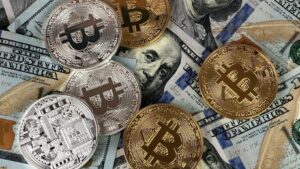
The Federal Reserve System, also known as “the Fed,” is the central banking system of the United States. It was created by the U.S. Congress in 1913 to provide the nation with a safer, more flexible, and more stable monetary and financial system. Over the years, the Fed has played a major role in shaping the U.S. economy and, as a result, the world economy.
The Federal Reserve System is made up of three parts:
- The Board of Governors, which is the Fed’s main governing body
- The 12 Federal Reserve Banks, which are regional banks that help carry out the Fed’s policies
- The Federal Open Market Committee, which sets monetary policy
The Board of Governors is made up of seven members who are appointed by the President of the United States and confirmed by the U.S. Senate. The Board serves a dual role as both the nation’s central bank and as a regulator of the banking system.
What does fed mean
The term “fed” is short for federal. So the Federal Reserve System is the central banking system of the United States federal government. The Fed was created by the U.S. Congress in 1913. Its job is to provide the nation with a safer, more flexible, and more stable monetary and financial system. Over the years, the Fed has played a major role in shaping the U.S. economy and, as a result, the world economy.
What are the benefits of having a strong FRS and what are some of the criticisms against it
The main benefit of having a strong Federal Reserve System is that it provides the nation with a safe, flexible, and stable monetary and financial system. This in turn helps to promote economic growth and stability. Some of the criticisms against the Fed include that it is too powerful and that it is not transparent enough. Additionally, some people believe that the Fed should be audited and that its policies are not always in the best interests of the American people.
How might changes to the FRS affect your wallet or purse – for better or worse?!
The Federal Reserve System plays a major role in shaping the U.S. economy, and as a result, changes to the Fed can have a significant impact on your wallet or purse. For example, if the Fed raises interest rates, it becomes more expensive to borrow money, which can lead to higher prices for goods and services. Alternatively, if the Fed lowers interest rates, it becomes cheaper to borrow money, which can lead to lower prices for goods and services. Thus, changes to the Fed can affect your wallet or purse either positively or negatively, depending on the particular change.
How do the Fed’s monetary policies impact interest rates and the economy?
The Fed’s monetary policies can have a significant impact on interest rates and the economy. For example, if the Fed raises interest rates, it becomes more expensive to borrow money, which can lead to higher prices for goods and services. Alternatively, if the Fed lowers interest rates, it becomes cheaper to borrow money, which can lead to lower prices for goods and services. Thus, the Fed’s monetary policies can impact interest rates and the economy either positively or negatively, depending on the particular policy.
How has the Fed evolved over time, and what challenges does it face in the future
The Fed has evolved over time in response to changes in the economy and financial system. Some of the challenges that the Fed faces in the future include managing interest rates in a time of low inflation, regulating banks and other financial institutions, and dealing with potential financial crises. Additionally, the Fed will need to continue to adapt to changes in technology and the global economy.






